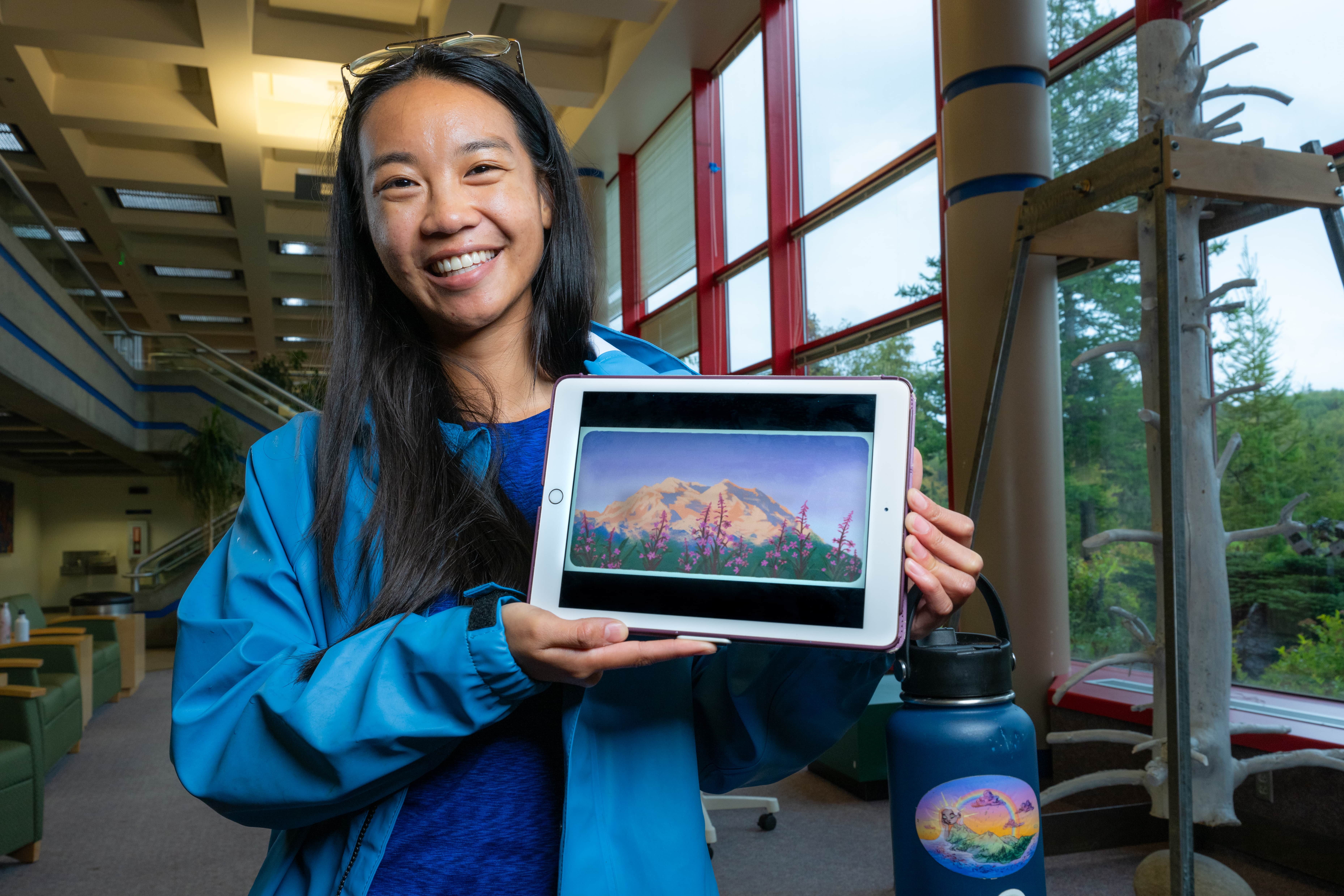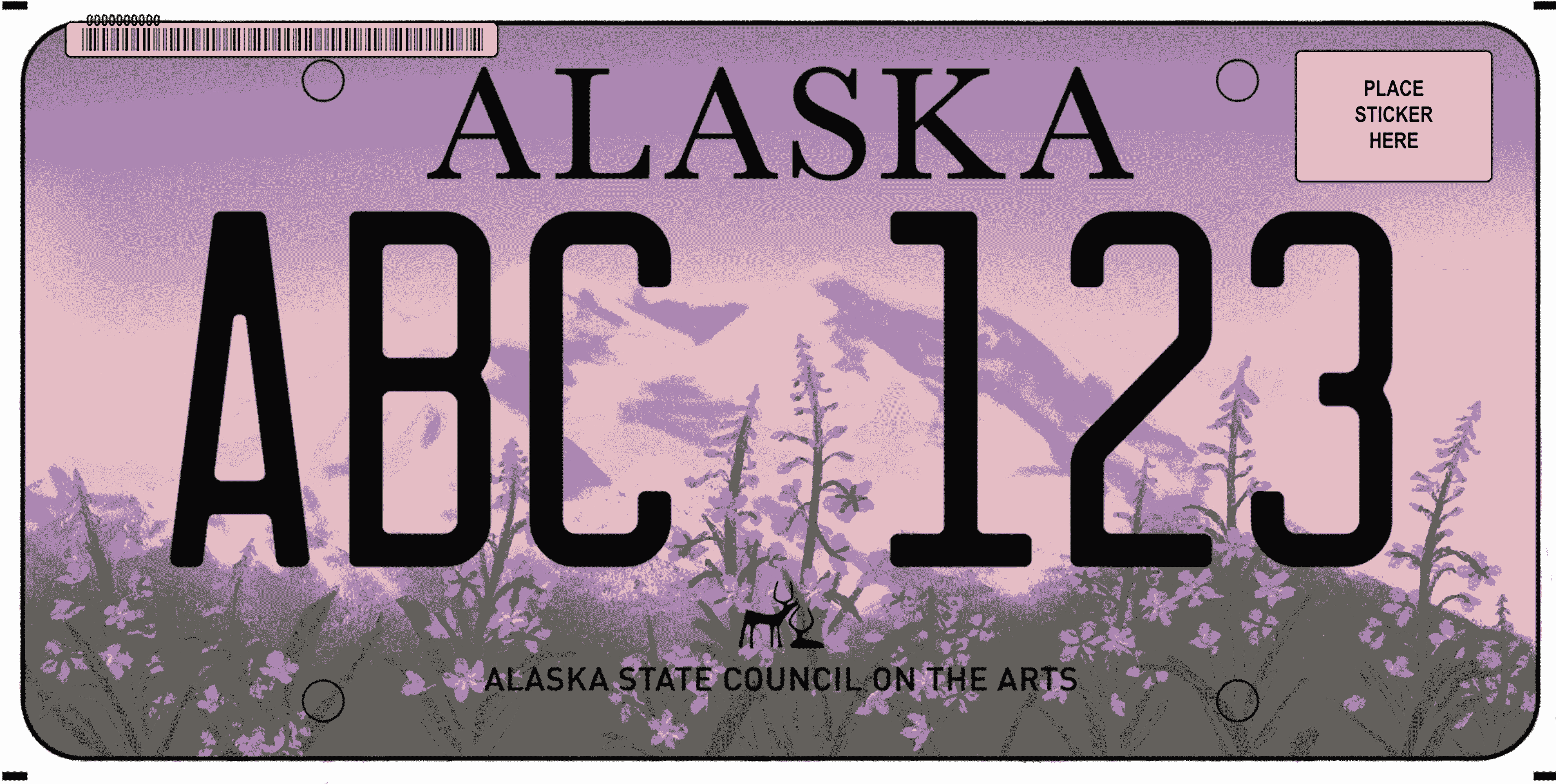License to create
Art alumna and ecology technician wins 2023 Alaska Artistic License Plate Competition
By Matt Jardin
At an unveiling ceremony presented by Gov. Mike Dunleavy during the Alaska State Fair on Saturday, Aug. 26, Sabrina Kessakorn, A.A. General Program '19, B.A. Art '21, was announced the winner of the 2023 Alaska Artistic License Plate Competition. While the day was rainy (per Alaska State Fair tradition), the scene depicted in Kessakorn’s design, “Fireweed in Denali,” was anything but. Featuring a pastel color palette showing fireweed against the backdrop of Denali, she hopes her license plate will offer a reprieve for drivers stuck in winter traffic.
More than a beautiful landmark, Denali was also the site of one of Kessakorn’s most transformational experiences in 2018.
“Denali changed my life,” said Kessakorn. “I had just started college and it was my first time being away from home for longer than a week. I got really incorporated into the land there and had this amazing experience on my birthday where I just happened to find an exhibition about artwork inspired by science. That changed my world and made me realize that I can be a scientist and an artist at the same time.”

Taking inspiration from her Alaska upbringing, as well as her job as wildlife and ecology technician at Colorado State University’s Center for Environmental Management of Military Lands, Kessakorn strives to bridge the gap between art and science while paying respect to Thai heritage and queer identity.
Using the universal language of art, she works to make complex scientific concepts more accessible, as opposed to being understood by a select few academics who read journals in their leisure time. A broader understanding of science, Kessakorn hopes, will lead to more informed environmental decision making.

“Not everybody is privileged enough to go to school to read science papers or understand scientific terminology,” said Kessakorn. “So I wanted to share what I was learning about how climate change impacts underrepresented and disadvantaged people, and communicate that in a way that is not only engaging, but educational and valuable to not just the scientific community, but to the population at large.”
Kessakorn chose UAA to foster both of her passions, majoring in art with a minor in environmental science. According to her, UAA was the ideal place due to it already being located in a community at the intersection of art and science. Being close to home and family was an added bonus.
During her studies, Kessakorn alternated her courses to focus on either art or science each semester, due to the complementary nature both subjects had on her inspiration — science drives her to create art, and art drives her to learn science. She plans to take a similar approach by taking on research or technician positions between art projects. Looking ahead, she also wants to incorporate more business acumen into her output.
“It didn't make sense for me to study in a different place where they don't understand ecological relationships,” said Kessakorn. “I really wanted to cultivate that in my art, so it just felt right to learn from people who understand, appreciate and respect those things and to help me build that and shape that in myself.”









